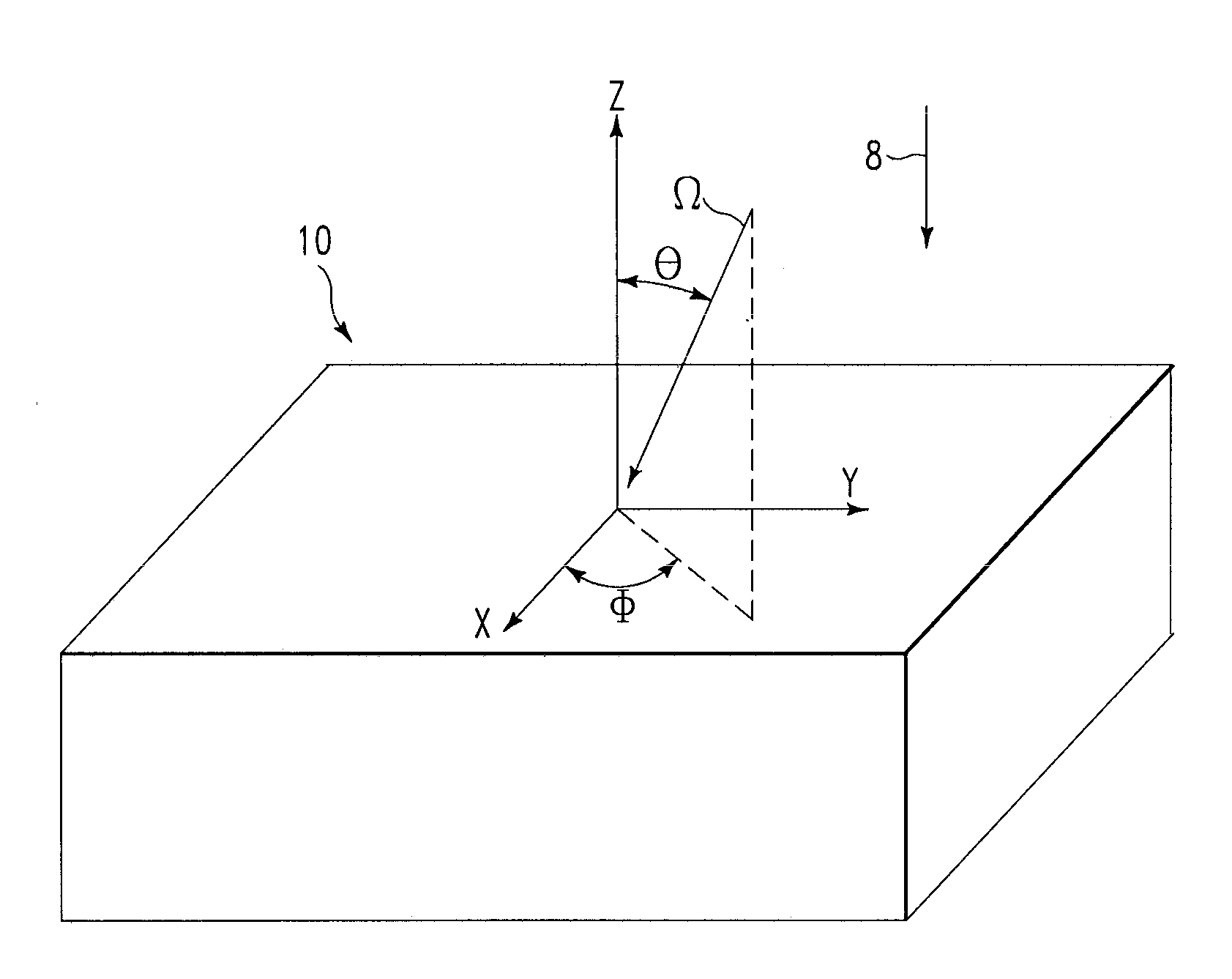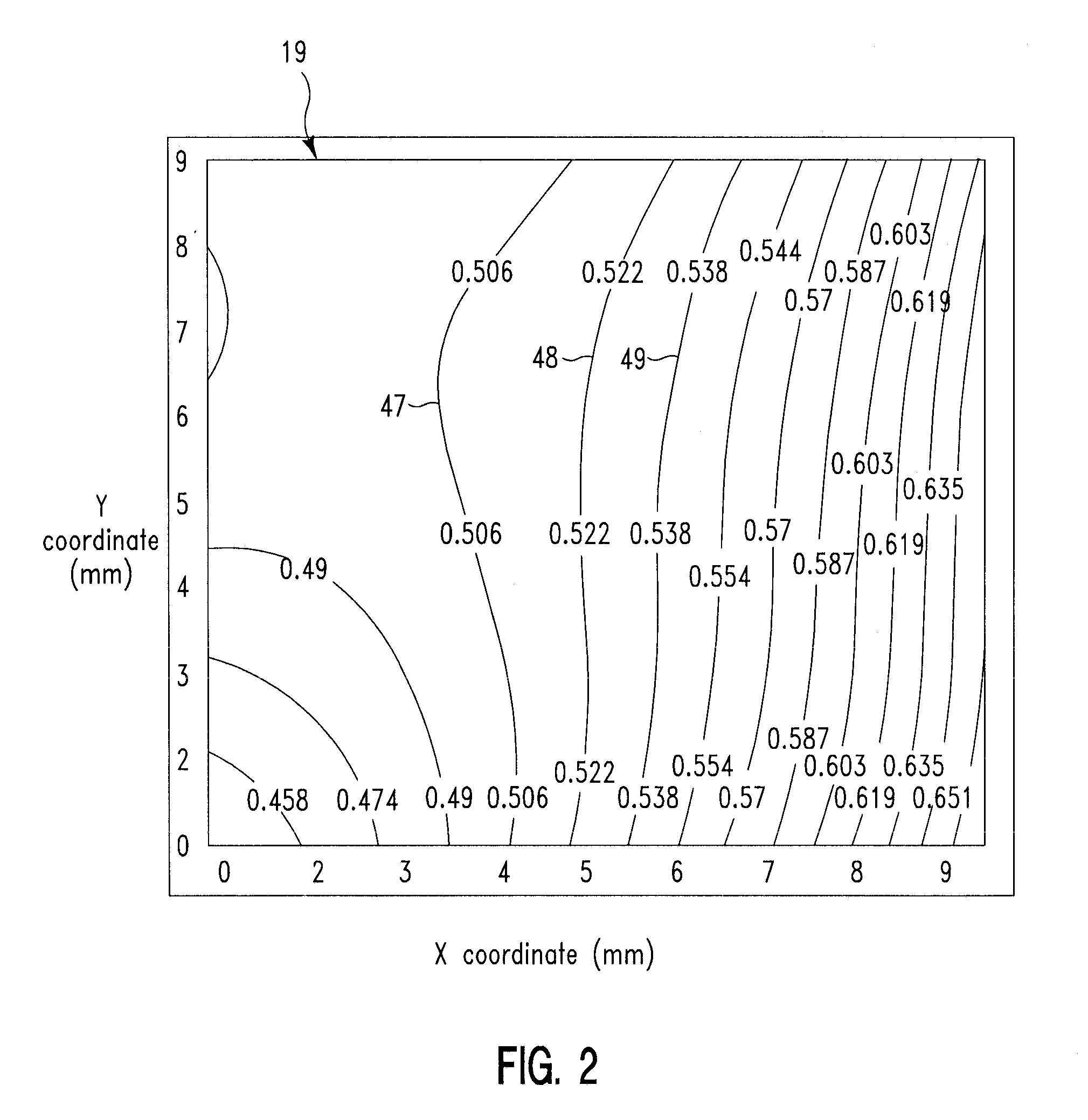Radiation mask with spatially variable transmissivity
a radiation mask and transmissivity technology, applied in the field of irradiation of a substrate, can solve the problems of insufficient insufficient heat generation of wafer regions, and inability to achieve thermal equilibrium over length scales, so as to improve the spatial uniformity of thermal annealing of silicon wafers
- Summary
- Abstract
- Description
- Claims
- Application Information
AI Technical Summary
Benefits of technology
Problems solved by technology
Method used
Image
Examples
Embodiment Construction
1. General Formulation
[0044]FIG. 1 is a diagram depicting propagation of first radiation 31 from a radiation source 21, through a mask 20, and incident upon a substrate 10 as second radiation 32, in accordance with embodiments of the present invention. The first radiation 31 is spatially uniform with respect to the spatial position on the top surface 29 of the mask 20. The first radiation 3 is incident upon a top surface 29 of the mask 20 and is partially reflected and / or partially absorbed while passing through the mask 20, such that the transmissivity (TM) with respect to a first radiation 31 varies spatially with position on the top surface 29 of the mask 20, as described infra. The portion of the first radiation 31 that passes through the mask 20 is subsequently incident upon a top surface 19 of the substrate 10 and is referred to as the second radiation 32. The radiation source 21, which represents one or more radiation sources, emits the first radiation 31 either as a continuo...
PUM
| Property | Measurement | Unit |
|---|---|---|
| transmittance | aaaaa | aaaaa |
| TM | aaaaa | aaaaa |
| reflectance | aaaaa | aaaaa |
Abstract
Description
Claims
Application Information
 Login to View More
Login to View More - R&D
- Intellectual Property
- Life Sciences
- Materials
- Tech Scout
- Unparalleled Data Quality
- Higher Quality Content
- 60% Fewer Hallucinations
Browse by: Latest US Patents, China's latest patents, Technical Efficacy Thesaurus, Application Domain, Technology Topic, Popular Technical Reports.
© 2025 PatSnap. All rights reserved.Legal|Privacy policy|Modern Slavery Act Transparency Statement|Sitemap|About US| Contact US: help@patsnap.com



